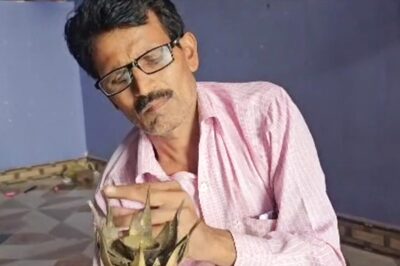
views
Textile encompasses many sub-sectors like the knitting and weaving industries, embroidery, printing, and textile finishing. It is a domain juxtaposed with aesthetics, technology, cultural roots, and symbolism making it a unique opportunity for exploring diverse career options. Through textile, we express the realms of cultural identity as well as solve practical problems which require scientific/science-based solutions.
What is included in a textile design course?
When students join a textile design course, they learn the technical aspects of textiles which include the basics of weaving and knitting structures. Throughout the course, they learn more complex structures like dobby and jacquard weaving which can be used for design development in the traditional handloom weaving industry like Banarasi weaving, Kani shawl weaving, Paithani, etc or could be used in the home furnishing industry in designing upholstery fabric. ‘
They also learn about various finishes which are applied on the fabrics for performance enhancement, and the chemistry of textiles and dyes which find an application in development of performance enhancement fabrics used in sportswear, kidswear, dyeing and printing industries. In the course, they are acquainted with innovation in materials and major technological developments in textiles.
The textile industry and courses around it provide youngsters with the opportunities to learn about the finer nuances of textile design development including market research and understanding customer insights, forecasting and trend research, and development of structures, prints, and embroidery. Students need to marry design and innovation to create new designs while keeping in mind the commercial aspect of their ideas and creations.
What are the various textile sectors?
Textile is a highly diverse industry and offers multiple possibilities across disciplinary amalgamations, making it a truly dynamic and constantly evolving field. A person entering the textile industry could steer their career in the direction of social intervention through traditional textiles by working with local craftsmen, or they could also join hands with the informal sector or work in industrial design with textile mills and labels. The aspirant could also explore innovation in prints and embroideries.
Fashion Industry: Textiles form the backbone of fashion and design houses, as well as corporates and brands looking to use unconventional textile materials, unique prints, and embroideries to represent their work. Most of the renowned designers showcasing their work at the International Fashion Week have used Indian textiles as a blueprint for their labels. Hand embroidery, a longstanding and popular art form in India, is a major contributor to the international fashion business as well.
Tech Innovation Companies: Like everything else in our society, textile is also progressing by adopting more environmentally sustainable production and logistics. This area has actively seen collaborations between textile engineers and designers who have come together to create technologically and aesthetically driven textiles.
Traditional textiles: Local weaving, printing, and embroidery techniques have been revived and returned to the mainstream consciousness as popular art forms. Previously a task traditionally taken up by NGOs in the social sector, today, brands and designers are embracing their roots with the help of traditional textiles and techniques in their creations. This has given a major boost to the informal sector and helped semi- skilled and skilled laborers earn a livelihood while adding unique flavor to the designer’s work.
Home Furnishing Industry: The home furnishing industry which includes designs for soft furnishings, bed and bath linen, and carpets has witnessed a huge surge in customers wanting to create unique homes and office spaces while customising their furnishings. A textile graduate could work as a print or weave designer or a merchandiser and help with creating personalized soft furnishings in current trends and help with design consultation for home and office spaces.
— Authored by Gauri K Purohit Associate Professor from School of Fashion, Pearl Academy, Jaipur
Read all the Latest Education News here




















Comments
0 comment